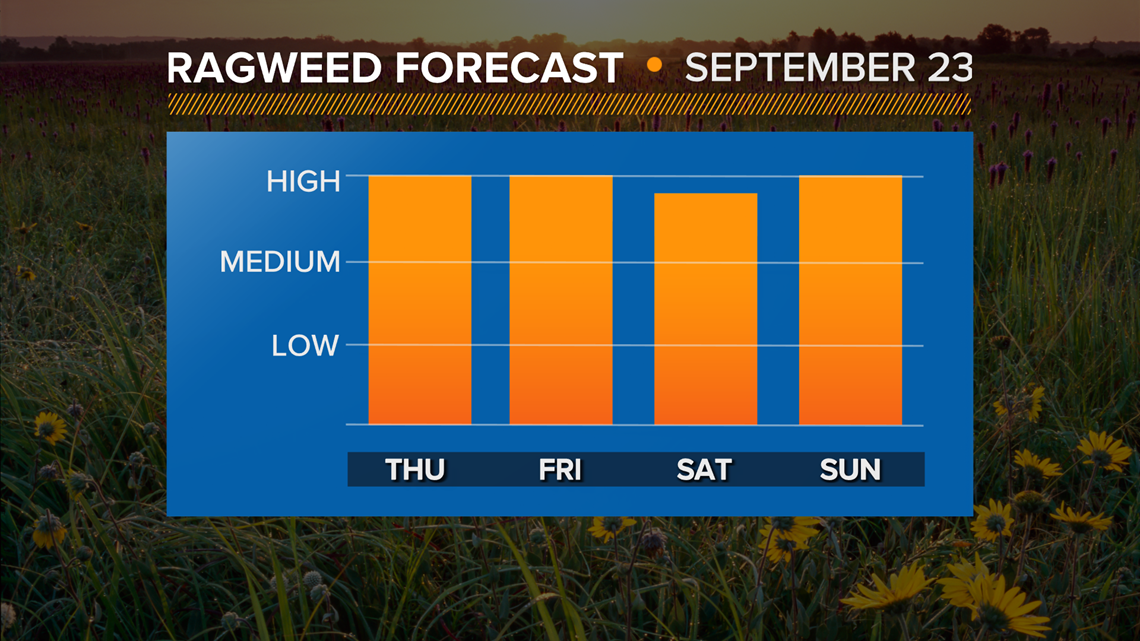ARKANSAS, USA — Most of us likely associate bad allergies and pollen with Spring. Makes sense given that Spring is the time of year when trees bloom and the grass starts to grow. While pollen levels are often high in the spring, they also tend to run high in the beginning of Fall from a completely different culprit.
Ragweed! It's estimated that around 15 to 25 percent of Americans suffer from ragweed allergies, according to the Asthma and Allergy Foundation of America. And we are in peak season right now!
WHAT IS RAGWEED?
Ragweed is in fact a weed that grows in 49 of the 50 U.S. states (not Alaska), but is most common in central and eastern portions of the country. There are 17 different types of ragweed plants across the United States. The Asthma and Allergy Foundation of America, says that each ragweed plant can release 1 billion pollen grains! Ragweed pollen is also very light so it can travel hundreds of miles from its original source.
HOW CAN I MINIMIZE ITS IMPACTS?
Here are some things you should know:
- 75 percent of people who are allergic to pollen are allergic to ragweed
- There is no cure for ragweed allergies
- Ragweed pollen is highest during the morning hours
- If you are allergic to ragweed other foods can irritate your mouth due to a similar type of protein (Melons, Bananas, Sunflower Seeds)
What you can do:
- Track pollen counts
- Plan your time outside when the ragweed counts are lower
- Keep your windows closed in your home and car
- Don't dry laundry outside
HOW LONG WILL IT LAST?
For most of the United States ragweed pollen peaks around mid-September, but it will likely stay with us until our first frost. Ragweed likes cool nights and warm days, which is the weather pattern we are currently in. That along with the lack of rain in the forecast means that ragweed allergies will stay very high for the next several days and likely well into October.


-Tyler
End of the week into the weekend weather forecast for NW Arkansas and the River Valley.

